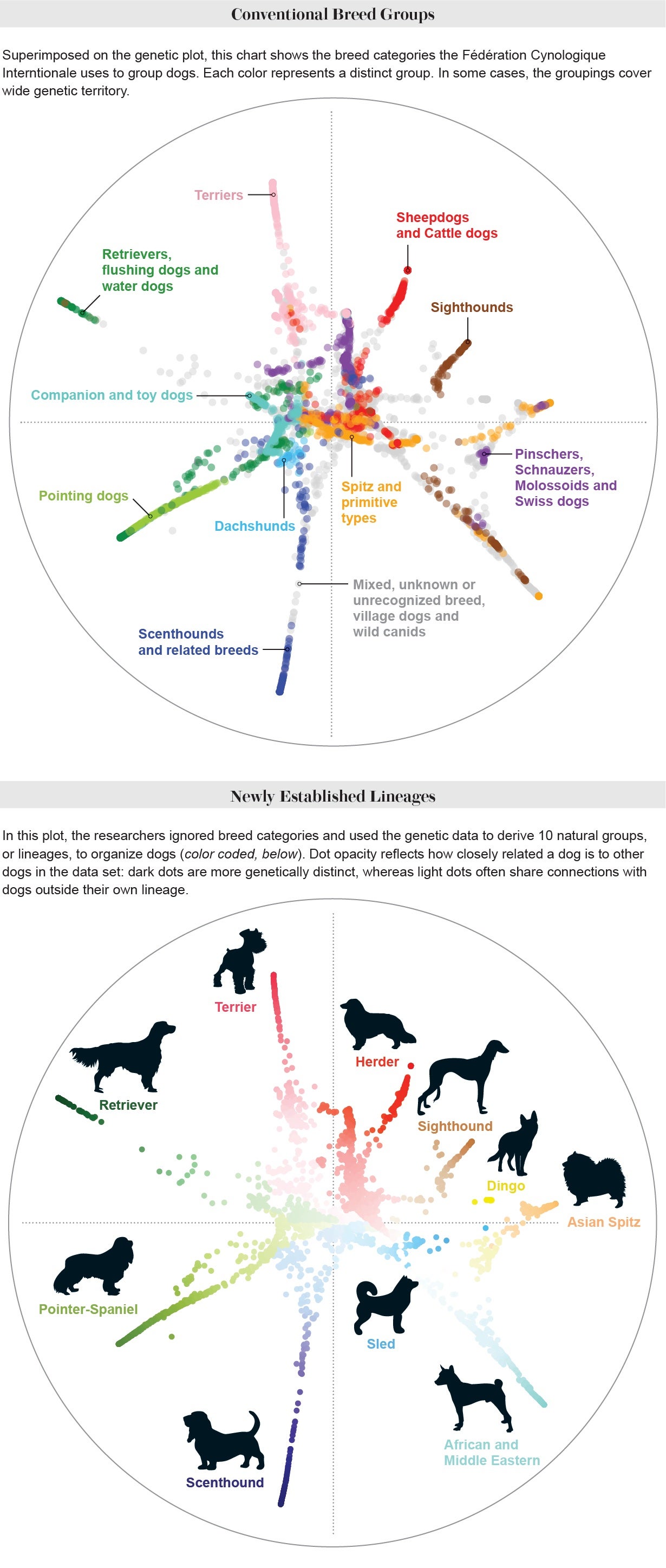When it comes to dog traits, genetics-based lineages are more telling than human-made categories

There are 356 unique breeds of dog, according to the Fédération Cynologique Internationale, the largest global organization of national kennel clubs. Yet understanding the genetic drivers for the behavioral traits that set these breeds apart has been a long-standing scientific challenge. In a recent study, scientists compiled DNA sequences for more than 4,000 domesticated and wild dogs to uncover the genetic connections between them and found that they sometimes defy the conventional, human-made breed categories. Instead of assuming that some breeds were related to others, the researchers found a new way to group dogs based on their genetics.
The analysis revealed that dogs fall into 10 “lineage” groups with close genetic connections. To see whether dogs in each lineage shared similar traits, the scientists combined their data with behavioral surveys filled out by the owners of around 46,000 purebred dogs. They found that many traits were common among members of each lineage and that certain genetic variants might be related to these traits. “We found a series of genes that turned out to be important in brain development in herding breeds,” says Elaine A. Ostrander of the National Human Genome Research Institute, a co-author on the study in Cell. “That’s a great jumping-off point to study how herding dogs herd.”
These two plots show two different ways of categorizing dog breeds—one based on human-defined groupings and another based on “lineages” derived from genetic data. In both plots, each of the 4,000 dots represents an individual dog. Their positions (identical in both plots) reflect how closely genetically related they are to other dogs—two nearby dots are genetically similar, and two distant dots diverge more.

This article was originally published with the title “The DNA of Dog Breeds” in Scientific American 328, 5, 88 (May 2023)
doi:10.1038/scientificamerican0523-88







